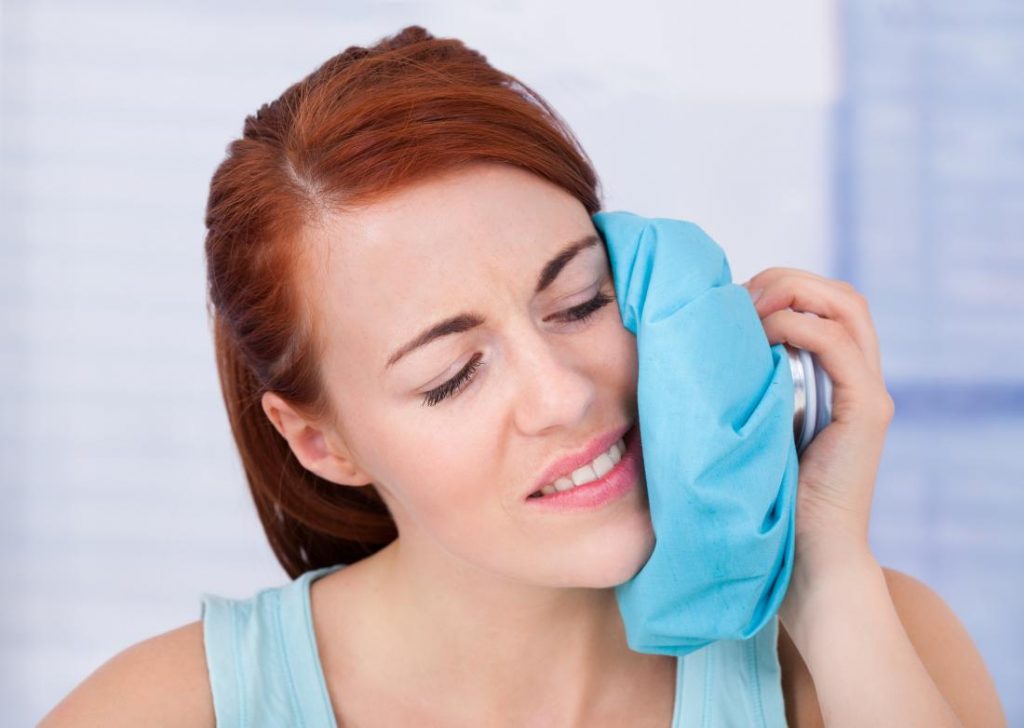

Place sock in a clean skillet over low/medium heat, flipping often to ensure that the salt is warming evenly. Pour salt in the sock and tie the ankle section in a knot. Place the sock on the ear and allow it to sit there for as long as you wish. When it is warm, but not so hot that it will be uncomfortable, apply 1-2 drops of essential oil directly on the sock if desired. When the oven reaches 350F it should be warm enough. Place the sock on a baking sheet and slide it into the oven. a few drops of lavender or tea tree essential oil (optional).1-1½ cups coarse sea salt (I’ve also used epsom salt with good results).Longer socks are better because you’ll need to tie the ankle section in a knot in order to keep the salt in.

Hot compress for ear ache how to#
In doing so, it might decrease middle ear pressure” How To Make A Soothing Salt Sock For Earaches Perhaps the salt also draws out fluid from the painful ear. My theory is that the heated salt retains the soothing warmth that eases the child’s discomfort. I have recommended this to parents over the years, and many have reported that it works. She then explains the recipe – which I have simplified in the next section – and adds: Beard learned about it:Ī friend’s grandmother from Italy treated all her children and grandchildren who had an earache with her sure-fire remedy, which has worked for at least two generations in her family.” Like many of my favorite remedies – this cough syrup for example – it’s been used for generations. I used this salt sock remedy with one of my littles a few months ago and it worked beautifully, so I wanted to pass it along. Specifically, warm salt in a sock, applied to the ear and jaw area to soothe discomfort and support healing. I’ve already shared some of my favorite natural remedies for earaches with you, but last year I discovered a new one while reading through Salt In Your Sock and Other Tried-and-True Home Remedies by Lillian Beard, M.D. The AAP recommends administering pain relievers to make children more comfortable, but some parents opt for other comfort measures. I’m just sharing my understanding based on the guidelines and conversations with my children’s pedi.)Īccording to this New York Times special report, between “80 – 90% of all children with uncomplicated ear infections recover within a week without antibiotics.” So, how can we help our kids be more comfortable? (I’m not an expert, of course, and this is not medical advice. If things aren’t getting worse, my understanding of the guidelines is that it’s fine to continue with watchful waiting. The same watching period applies to older children with a mild infection in one or both ears.” (This is easy to understand interpretation of these technical guidelines from the AAP was written by LiveScience.)

( source)Ĭhildren ages 6 months to 2 years with an infection in one ear who don’t have a high fever, severe pain or other complications can be watched for 48 hours without antibiotic treatment to see if the infection gets worse, the guidelines say. What approach does the American Academy of Pediatrics Recommend?įor otherwise healthy kids with mild inner ear pain and no conditions that “may alter the natural course” of acute otitis media (anatomic abnormalities such as cleft palate, genetic conditions such as Down syndrome, immunodeficiencies, the presence of cochlear implants, recurrent ear infections, etc.), the AAP now recommends a wait-and-see approach.

Harvard Medical school concurs in this article, as do many other sources. Richard Rosenfeld, who helped write the new American Academy of Pediatrics (AAP) guidelines for treating ear infections. ( source 1, source 2)įortunately, most earaches– whether truly an infection or an irritation due to another cause – clear up without any treatment, says Dr. Although most earaches are viral in nature – and therefore not treatable by antibiotics – the common belief used to be that it’s best to prescribe them “just in case.” Turns out, that approach actually increases a child’s risk of recurrent ear infections and other problems. Take, for example, the once common practice of giving antibiotics to children with earaches. Sometimes things work out – like when a certain kitchen helper forgets to add an egg to the lemon poppyseed muffin recipe you’re tinkering with and accidentally perfects it.


 0 kommentar(er)
0 kommentar(er)
